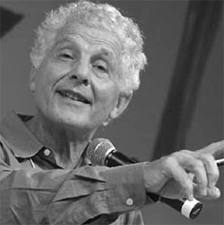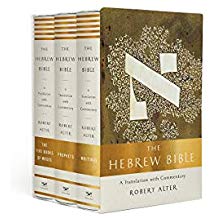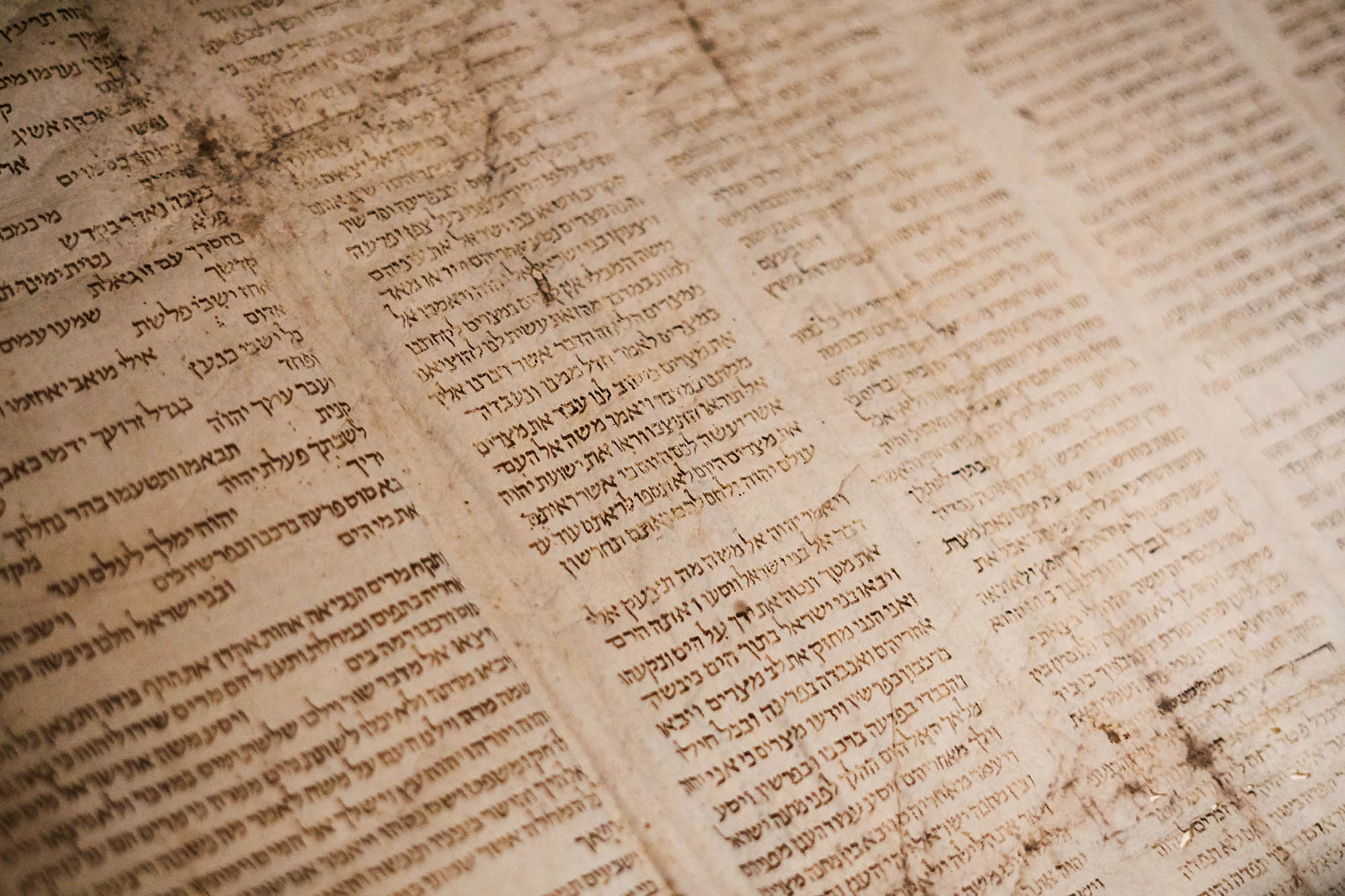Robert Alter’s New Translation of the Hebrew Bible is an important work of scholarship for biblical exegesis. What exactly is the Hebrew Bible? That is a harder question to answer than one might initially think. The Hebrew Bible is a massive work, written by at least 33 contributing authors over the span of at least 1,300 years, and consisting of a wide variety of ancient genres.
The Hebrew Bible is, at the same time, the word of God, a series of nested historical narratives (one within another) forming a single grand redemptive-historical narrative, and a collection of literary masterpieces designed to burrow their way into the hearts of their readers like living seeds intended to spring up into new life.
Much of Biblical scholarship, teaching, and preaching has focused on the first two perspectives—the Bible as divine revelation, and as redemptive-historical narrative—but in perceiving the literary genius of the Bible, we have been found somewhat wanting. Many factors have contributed to our lack.
Among them is the, albeit noble, attempt on the part of Bible translators to explain and interpret the text of the Old Testament in their translations, rather than attempting to bring to the fore the literary and metaphorical categories of the Biblical writers. In our quest to understand the Bible, we’ve moved away from delighting in its rich artistry. That is where Robert Alter comes in.
In the December 1975 issue of Commentary Magazine, Alter, professor (now emeritus) at the University of California at Berkeley published a short, paradigm-shifting essay entitled, “A Literary Approach to the Bible.” The essay focused on the story of Judah and Tamar in Genesis 38. In it, Alter contends that modern translations blunt the literary point of the passage by alternately translating the Hebrew zera, as “seed,” “offspring,” and “semen.”
In doing so the theme of the “seed,” so prominent in the book of Genesis, is obscured from view. Onan’s sin of spilling his seed on the ground is not abhorrent to God because he is preventing pregnancy, or merely refusing to do right by his dead brother, preserving his inheritance through children raised up in his name.
Onan sins against the covenant promise to Abraham, refusing to take part in the redemptive plan of God to raise up a seed through whom the world would be remade. By trying to explain the meaning of the text through translation, modern translators have explained the meaning away.
Robert Alter’s Translation of the Hebrew Bible

In 1981, Alter rocked the world of biblical studies when this and other essays were published in his book, The Art of Biblical Narrative, followed in 1985 by The Art of Biblical Poetry. These works sought to teach readers of the Bible to understand the inner workings of ancient Hebrew literature.
Alter’s analyses of biblical literature emphasized that the Bible doesn’t communicate theological meaning in a vacuum. The Bible communicates theological meaning through narrative and poetic art.
To fully grasp intellectually, live willingly, and enjoy rapaciously the God revealed in the Hebrew Scriptures via an English translation, we need a translation that adheres as closely as possible to the structures, rhythms, metaphors, and literary devices of the original, rather than sacrificing the essence of the underlying Hebrew to allow for smoother reading—if perhaps rougher understanding—in English.
So, when two days before Christmas, I saw that Robert Alter had ghost-dropped a translation and commentary of the whole Hebrew Bible, I immediately bought myself a present. And having now had a couple weeks to pour over it, I am disappointed. I would like to give you three examples of why I love this translation; three things that Alter’s translation uniquely preserves.

Hebrew Word Order and Usage
Unlike the more rigid rules that govern English word order, Hebrew has a flexibility which allowed the authors of the Old Testament to display important emphases, contrasts, and linguistic cadence by fronting the words they wanted to stress.
For example, here is the ESV translation of Jonah 1:9b, “… I fear the Lord, the God of heaven, who made the sea and the dry land.” Here is the same section in Alter’s translation, “… the Lord God of the heavens do I fear, Who made the sea and the dry land.”
The sailors have been crying out to every god in their pantheons to no avail. So, when they interrogate Jonah as to the God or gods he fears, they are asking, “Which of the gods rules the sea, and thus can deliver us from this storm?”
In the Hebrew, the first word out of Jonah’s mouth in answer to the question is, “The Lord.” Jonah was not stressing his status as a Yahweh fearer, but making plain what will later be the climax of his own plea for deliverance from the belly of the great fish, “Rescue is the Lord’s” (Jonah 2:10 Alter).
It’s a simple and relatively small thing, but the concatenate effect of Alter’s insistence on highlighting these little moments of intensity wherever English will allow makes one halt and ponder the meaning of the fronted word, much like the original Hebrew readers would have.
In English, we eschew repetition, but in Hebrew, it is the primary vehicle of meaning; as noted in my earlier illustration from Genesis 38. Alter comments in The Art of Biblical Narrative, “Through abundant repetition, the semantic range of the word-root is explored, different forms of the root [word] are deployed, branching off at times into phonetic relatives (that is, word-play), synonymity, and anonymity; by virtue of its verbal status, the [lead word] refers immediately to meaning and thus to theme as well (For example, go and return in the Book of Ruth; the verb to see with its poetic synonyms in the Balaam story.)”
The Hebrew literary art is tied together with these repeated linguistic spotlights, highlighting important thematic elements to the astute reader. But, most English translations pave over this important literary device. The examples are too numerous to give a full account here, but Alter faithfully reproduces the repetitions throughout his translation, and notes in his commentary when a shift is necessary.
Hebrew Rhythm
Like all languages, Hebrew has a particular rhythm, a cadence that conveys meaning along with the words themselves. In his Introduction, Alter quotes British critic A. Alvarez describing the “crucial role of rhythm in all literary art: ‘the rhythm—the way the sounds move, combine, separate, recombine—is the vehicle for the feeling… And without that inner movement or disturbance, the words, no matter how fetching, remain inert. In this way at least, the dynamics of poetry… are the same as the dynamics of dreaming’ (Alter xxxvi).” I don’t know that Bible translators have even asked the question of how to preserve the rhythms of the underlying Hebrew. As an example read Genesis 7:13-14, in the ESV and then in Alter’s translation:
| ESV | Alter |
| On the very same day Noah and his sons, Shem and Ham and Japheth, and Noah’s wife and the three wives of his sons with them entered the ark, they and every beast, according to its kind, and all he livestock according to their kinds, and every creeping thing that creeps on the earth, according to its kind, and every bird, according to its kind, every winged creature. | That very day, Noah and Shem and Ham and Japheth, the sons of Noah, and Noah’s wife, and the three wives of his sons together with them, came into the ark, that as well as beasts of each kind and cattle of each kind and each kind of crawling thing that crawls on the earth and each kind of bird, each winged thing. |
The rhythm in the Hebrew is that of “a grand solemn sweep, a sort of epic march” (Alter xxxvii). In contrast, the ESV’s refrain, “according to its kind” is a five-syllable mouthful compared with the single word it translates, leminah. Reading Alter’s translation aloud beside it, you can feel the difference in cadence. Alter beautifully explains:
Biblical Hebrew, in sum, has a distinctive music, a lovely precision of lexical choice, a meaningful concreteness, and a suppleness of expressive syntax that by and large have been given short shrift by translators with their eyes on other goals. The present translation, whatever its imperfections, seeks to do fuller justice to all these aspects of biblical style in the hope of making the rich literary experience of the Hebrew more accessible to readers of English (Alter xxxix).
Hebrew Metaphors
Metaphor is the substrate of thought and language. In a sense, the world itself is metaphorically related to God. The world images God, but is not itself God. When David wrote, “The Lord is my crag and my bastion” (Psalm 18:2 Alter), he was not picking up a thing unrelated to God and by some happy accident finding things that it has in common with him. God created high mountain cliffs, so when standing upon them, one at once feels safety from enemies and smallness of self.
These crags were designed for the express purpose of our being able to understand that being “in Christ” is like standing on a mountain. When we make metaphors we are relating the various elements of one domain with those of another for the purpose of understanding. Metaphors bridge phenomenal worlds.
Metaphors are also fundamental to the way we understand the world. Because we cannot think in abstraction, we make use of metaphor to put abstract ideas into the language of concrete realities. Metaphorical thinking observes its object from varied vantages. From one perspective “The Lord is my crag and my bastion” (Psalm 18:2 Alter) and from another “the Lord your God is a consuming fire…” (Deuteronomy 4:24 Alter).
The former emphasizes the safety of trusting in the Lord, the latter the danger of his holiness to the unholy. Both are true statements about Yahweh, emphasizing different aspects of his character from different perspectives. Our thinking is shaped around, to use a metaphor, root metaphors and branching metaphors. For instance, when I say, “I won the argument” the idea of winning is a branch of the root metaphor arguments are war. Root metaphors form a culture’s narrative and worldview. Understanding a culture’s root metaphors is imperative to understanding the culture.
Translators are faced with a choice when they come upon metaphors in the Hebrew text. They can either choose a metaphor in the target language that aptly matches that of the source language, thus helping the reader understand the face value of the metaphor, or they can translate the metaphor as is, forcing the reader to learn to think in the source languages point of view. I prefer the latter approach.
For example, I was translating Micah 7:5b, “from the one who lies in your lap guard the opening of your mouth” (my translation). When I went to check the ESV, I found, “guard the doors of your mouth from her who lies in your arms.” I went back the Hebrew, thinking I misread the word for “lap,” I did not. The idea of “lying in your arms” is the dynamic English metaphorical equivalent of the Hebrew idea of “lying in your lap.” The translators translated one metaphor for another.
I know this seems small and nit-picky, but as a follower of the God of the Bible, I don’t want to make the Bible use my categories of thought. I want to shape my categories around the Bible’s. I want to approach the text as a traveler visiting a foreign land, with the humility to seek to understand their culture, language, and root metaphors. Alter’s translation is committed to helping us do just that, even if its more work on the readers end.
Finally, Alter’s commentary throughout each volume yields rich literary insights that you won’t get anywhere else. The modern Christian is encouraged to take his Bible seriously, but not necessarily to enjoy it as literature. There is no reason these two need to stand in opposition to one another. In fact the means by which we can best take our Bible’s seriously is to do with it what the Bible itself demands be done, delight in it! Seek its wisdom like gold, and taste its sweetness like honey.
The Lord’s teaching is perfect,
restoring to life.
The Lord’s pact is steadfast,
it makes the fool wise.
The Lord’s precepts are upright,
delighting the heart.
The Lord’s command unblemished,
giving light to the eyes.
The Lord’s fear is pure,
outlasting all time.
The Lord’s judgments are truth,
all of them just.
More desired than gold,
than abundant fine gold,
and sweeter than honey,
quintessence of bees (Psalm 19:8-11 Alter).
By learning to enjoy the biblical stories and poetry more fully as the works of literary genius that they are, we will also come to see more clearly, love more faithfully, and experience more richly the God behind the pens of its human authors. C. S. Lewis said that “joy is the serious business of heaven,” and the Bible is a heavenly gift meant to be enjoyed and experienced in all its literary power. Alter’s translation is a huge step in that direction.
Further Reading
“Robert Alter’s Landmark Work Sheds Fresh Light on Old Testament,” by Hershael York
“A New Hebrew Bible to Rival the King James,” in the New York Times
[Editor’s Note: if you own these volumes, go read the book of Judges; you’ll find a fun little typo near chapter 3, if memory serves, which includes the in-line URL for the NY Times. We all make mistakes!]
“After 24 Years, Scholar Completes 3,000-Page Translation Of The Hebrew Bible,” on NPR
This post is by guest-author Chad Escue. Chad is a graduate of Westminster Theological Seminary.

